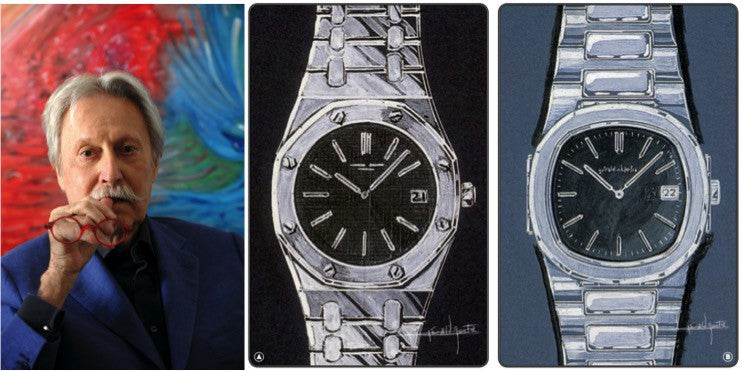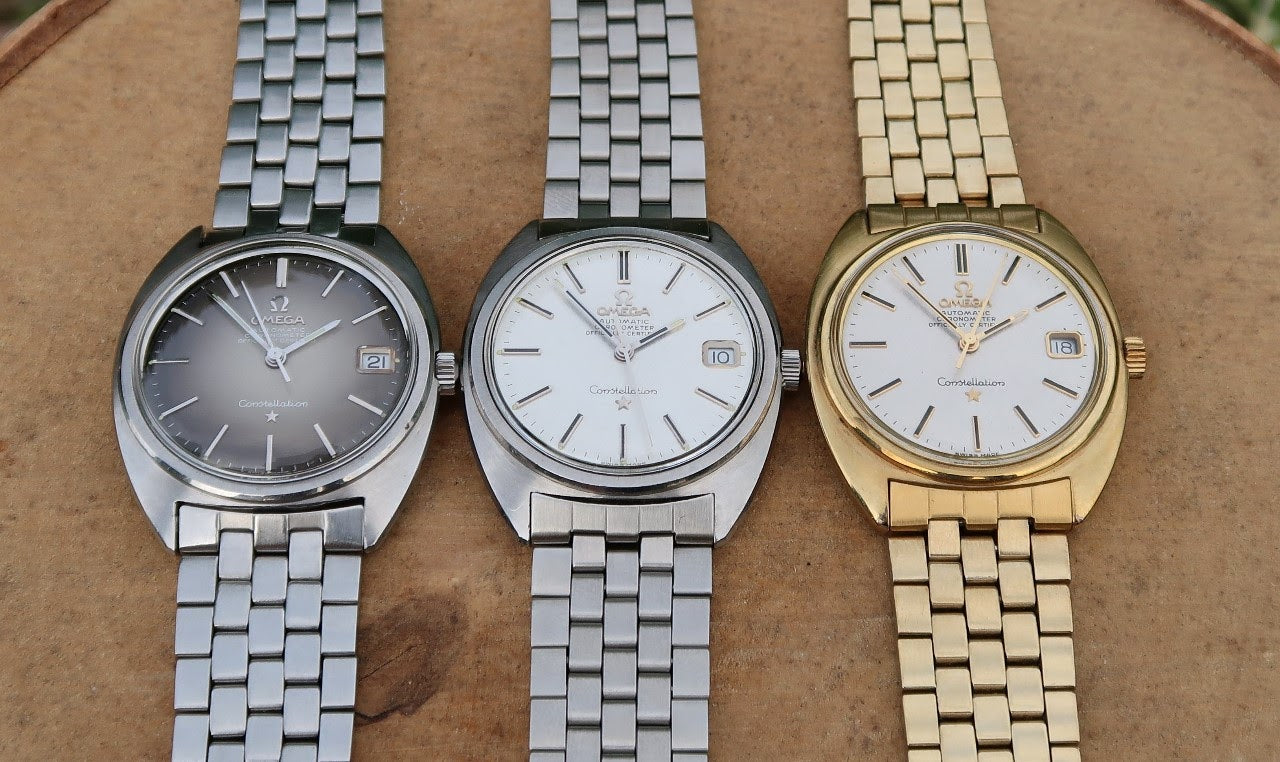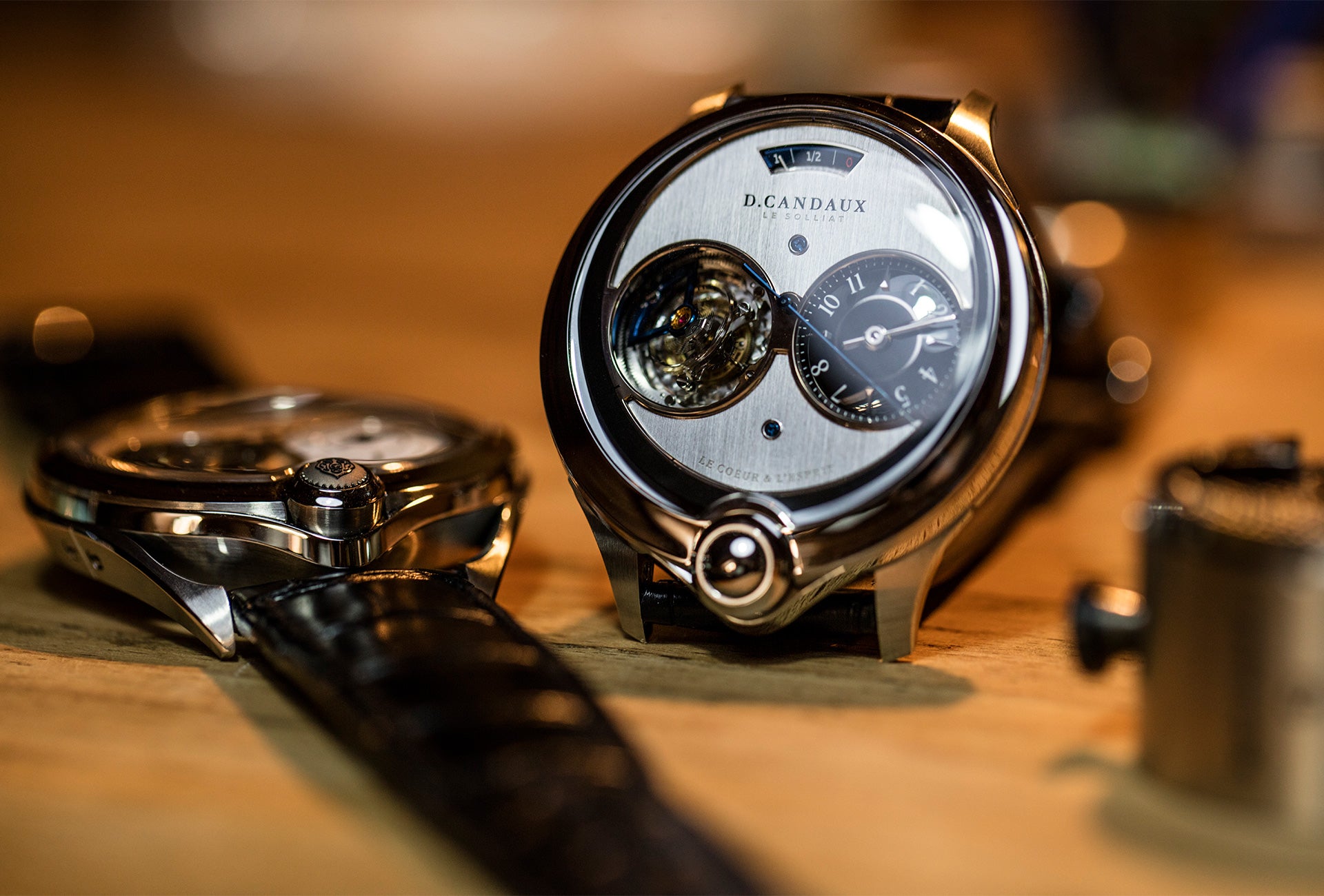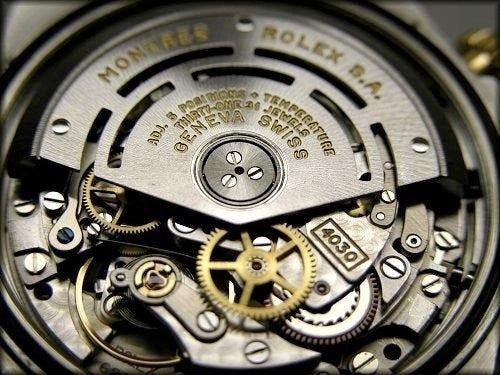
3 Gerald Genta Designs You Might Not Have Known About
Well-established as one of the watch world’s most famous watch designers, if not the most famous, Gerald Genta is a name that just about every watch lover knows. While several of his designs, like the Audemars Piguet Royal Oak and Patek Philippe Nautilus, have gone down in history as some of the most iconic watches ever - just because Gerald Genta designed a watch does not mean it has free reign to become a classic. Here we are going to explore three of Gerald Genta’s designs that have not reached the same kinds of stratospheric heights as the Nautilus and Royal Oak, for one reason or another.

Universal Geneve Polerouter
Designed by Genta in 1954 when he was just 23, the Universal Geneve Polerouter is the watch that kick-started his illustrious career. As the story goes, Universal Geneve approached Genta to design a watch for them to commemorate Scandinavian Airlines Systems (SAS) flights from Europe to Los Angeles and New York. Genta designed them the Polarouter which was later renamed as the Polerouter. The name of the watch can be explained when the route of the flight is understood. To fly from Copenhagen to Los Angeles, SAS flew over the North Pole. This unprecedented flight path shortened flight times from 36 to 22 hours. However, flying over the North Pole had the challenge of dealing with the Earth’s magnetism that would wreak havoc on the timing instruments. SAS asked Universal Geneve to make their pilots watch tough enough to withstand that magnetism, and so the Polarouter was born.
 The first few Polarouters were given to the flight staff upon landing in LAX and came bearing the SAS logo on their dials Only several hundred of these were released, and subsequently they have become very highly coveted. The Polarouter’s initial design was a fairly unobtrusive 34.5mm case with bombé lugs and a dateless dial. A year after the 1954 release, the watch was renamed as the Polerouter and began a design journey with some small aesthetic changes occurring every so often. In 1955 the first of the big overhauls of the Polerouter came in the shape of a new movement. UG equipped the watch with their new 215 micro-rotor movement, a first of its kind. This movement has the winding rotor set inside the movement instead of underneath it thus helping the watch maintain a thin case. Micro-rotor movement Polerouters had ‘Patent rights pending’ inscribed on the movement until 1958 due to a legal dispute with Buren. The micro-rotor movement continually improved over the years with the most common movements in the Polerouter being the cal. 68 and 69.
The first few Polarouters were given to the flight staff upon landing in LAX and came bearing the SAS logo on their dials Only several hundred of these were released, and subsequently they have become very highly coveted. The Polarouter’s initial design was a fairly unobtrusive 34.5mm case with bombé lugs and a dateless dial. A year after the 1954 release, the watch was renamed as the Polerouter and began a design journey with some small aesthetic changes occurring every so often. In 1955 the first of the big overhauls of the Polerouter came in the shape of a new movement. UG equipped the watch with their new 215 micro-rotor movement, a first of its kind. This movement has the winding rotor set inside the movement instead of underneath it thus helping the watch maintain a thin case. Micro-rotor movement Polerouters had ‘Patent rights pending’ inscribed on the movement until 1958 due to a legal dispute with Buren. The micro-rotor movement continually improved over the years with the most common movements in the Polerouter being the cal. 68 and 69.  Throughout its life the Polerouter had been priced at the high-end of the market, costing the same as the Rolex Explorer and Omega Seamaster at the time, and being marketed as a dressy watch capable of withstanding the elements. Despite ending its initial run in 1969, some more quartz variants were released in the 80s and 90s that weren’t very well received. These days the watch can easily be found online, with the Polerouter being one of the most accessibly priced of Genta’s watches, even though it has gained some traction as a bit of cult classic. Thanks to the cessation of Universal Geneve’s operations, the Polerouter has become a watch that collectors are beginning to realise is a bit of a value proposition at the minute, with popularity only increasing as time goes on.
Throughout its life the Polerouter had been priced at the high-end of the market, costing the same as the Rolex Explorer and Omega Seamaster at the time, and being marketed as a dressy watch capable of withstanding the elements. Despite ending its initial run in 1969, some more quartz variants were released in the 80s and 90s that weren’t very well received. These days the watch can easily be found online, with the Polerouter being one of the most accessibly priced of Genta’s watches, even though it has gained some traction as a bit of cult classic. Thanks to the cessation of Universal Geneve’s operations, the Polerouter has become a watch that collectors are beginning to realise is a bit of a value proposition at the minute, with popularity only increasing as time goes on.
Omega Constellation
Next, we have the Omega Constellation. Tracing its origins back to Omega’s 100th anniversary in 1948, the Omega Constellation has gone from a flagship model to a relatively obscure offering. While not originally designed by Genta, or named the ‘Constellation’ – that didn’t come around until 1952, the collection was massively popular back in the day. Originally offered as a limited production watch, the Centenary Chronometer, as it was called, had so much demand that Omega decided to keep making it. With production so high, Omega decided to create a collection of automatic chronometer watches in 1952 that would become the Constellation as we know it today.
Genta's C-Shape Constellation in all gold
The original model Constellations had several elements that have gone on to become emblematic of the collection. From the elegant lugs and pie-pan style dials to the dauphine hands and iconic diamond-shaped hour markers, the Constellation was unique looking, to say the least. These good looks went down a treat with customers, and within no time the Constellation was outselling every chronometer model that Omega competitor Rolex had to offer. Looking to update its style even in the face of massive popularity, Omega decided to revamp the model in the ‘60s, with the help of one Gerald Genta.
This revamp was known as the C-case, or C-type, and was very much inspired by the Space-age design aesthetic that had taken over in the ‘60s. The new C-case design had some rather dramatic changes from its predecessor. These came in the way of integrated lugs, no pie-pan dial, baton indices and stick hands. Even the case shaped changed from a circular shape to the tonneau shape. While it hasn’t ever been confirmed, it is widely believed and accepted that it was Gerald Genta who designed the C-case. As was the norm at the time, freelance designers were not credited for their designs, and so they had to given credit for their designs up to the brand’s that paid them for their work. 
Now that the Constellation has since been updated several times since the C-case, the Genta version of the Constellation has all but been forgotten and become a truly obscure watch in both, the wider community and even with Omega themselves. 
Disney Designs
Following the founding of his own brand in 1969, Genta began to create watches that were wildly different from what was typical at the time. Experimenting with new materials, case shapes and designs, Genta eventually thought he would bring cartoon characters to the dials of his watches. Following this decision, he approached Disney in the ‘80s and successfully obtained a license to incorporate Disney characters into his watches. Most of these designs used the hands of the Disney characters as the hands of the watches and even included complications such as retrograde displays and even some lavish designs adorned with diamonds and precious metals.
While the Disney-themed watches have also gone on to become cult classics and are unforgettably Genta’s designs thanks to his eponymous brand’s name being suspended in the dial somewhere, they have become relatively obscure in today’s landscape. While still commanding hefty price-tags, these watches are for horological heavyweight collectors that are happy to spend upwards of $5000 on a watch that will, realistically, not be worn on a day-to-day basis and just be a bit of fun, even though they do come with horological merit. 
Like any person within an industry, there will always be obscurities to their work and even an industry icon like Gerald Genta is not immune to some watches of his failing to live up to the massive success of his other designs. After all, it is important to note that Genta created two of the industry’s most iconic designs, so anything else he created over the course of his career certainly had big shoes to fill!


Leave a comment
This site is protected by hCaptcha and the hCaptcha Privacy Policy and Terms of Service apply.